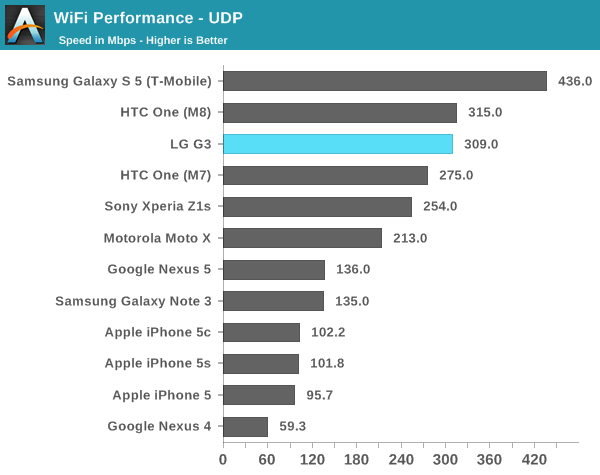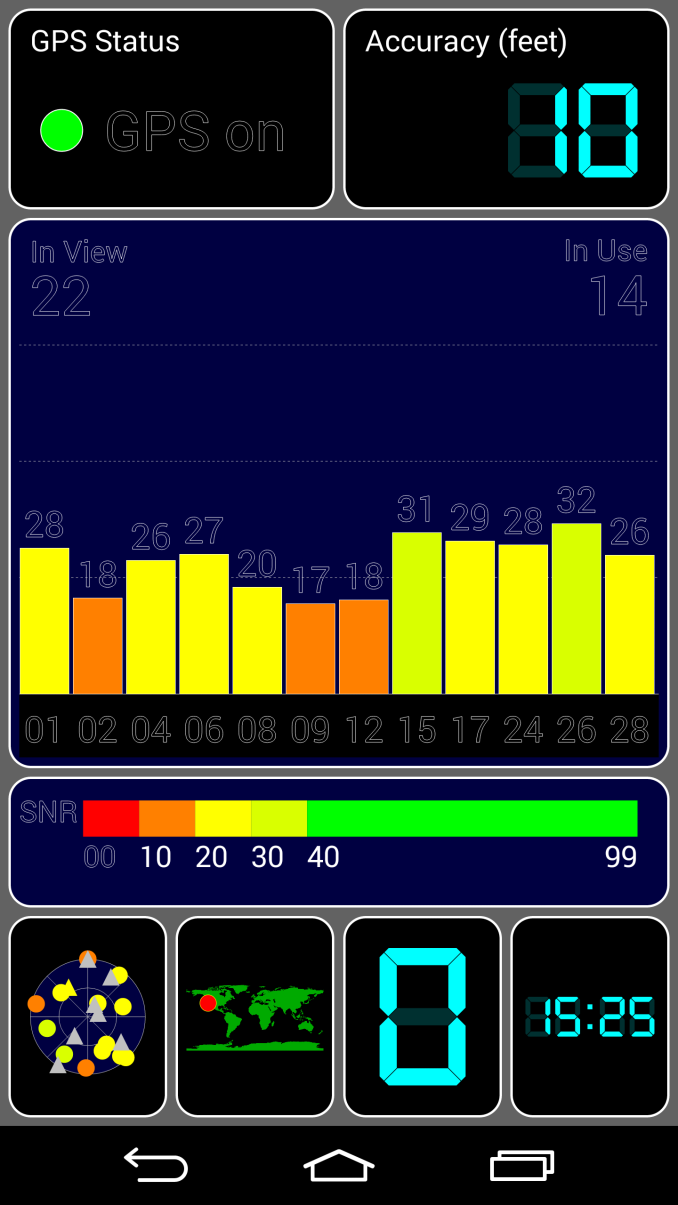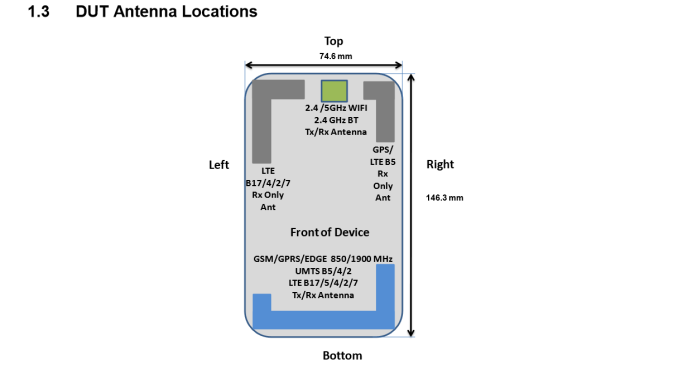The LG G3 Review
by Joshua Ho & Anand Lal Shimpi on July 4, 2014 5:00 AM EST- Posted in
- Smartphones
- LG
- Mobile
- Laptops
- G3
WiFi
These days, most OEMs seem to be using either Qualcomm's WCN3680 or Broadcom's BCM4354, depending upon whether the OEM wants to use a 1x1 or 2x2 antenna configuration. Surprisingly, LG bucks this trend by using Broadcom's BCM4339, a combo WiFi/BT/FM chip that we first saw in smartphones such as the Note 3 and Nexus 5. The WiFi antenna in this case seems to be along the top edge of the phone. It seems that LG has done some work to improve performance on this platform, as we see near parity with the One (M8)'s WCN3680 setup when the Nexus 5 and Note 3 were noticeably worse in performance. I suspect that LG selected this part with the specific goal of maintaining commonality and driving down cost by increasing volume. In this case, there doesn't seem to be any real disadvantage, especially because going to 2x2 hasn't quite doubled transfer speeds in practice.

GNSS
While GNSS quality was once a significant issue in the age of the Galaxy S and HTC Desire, today things couldn't be further from the truth. Almost every smartphone uses the MDM9x25 IP block in one way or another, and this means that GPSOne Gen8B is included as well for GLONASS, GPS, and Beidou support. Overall, accuracy is strong and the time to first lock is extremely fast, even without assistance data. On a cloudy day in San Jose it took around 30 seconds to do a true cold lock without assistance data.
Cellular
For the most part, there's not much new here as this cellular architecture is shared by the One (M8) and Galaxy S5. Namely, the G3 has an MDM9x25 modem, a WTR1625L and WFR1620 transceiver for carrier aggregation, and an Avago power amplifier for the antenna. I didn't notice much in the way of issues with cellular reception or anything else on the G3, although it seems that the SKT variant we were sampled doesn't read AT&T USSD codes correctly. This should be resolved by buying the correct regional variant. The photo below shows general antenna placement for the variants that I've seen, but banding will differ.
Rear Speaker
Unfortunately, I don't yet have the necessary equipment to test speakerphone volume on devices, but subjectively LG has put a solid speaker into the G3. It's still rear-facing, but both volume and quality are good enough to be comparable to the M8. Curiously, rather than an NXP speaker protection IC, LG has gone for a Cirrus Logic solution that identifies itself as the CS35L32. Based upon a quick search on the internet, this appears to be an obsolete part, with not much else in the way of available information.
Misc
While I'm unable to test the wireless charging functionality, I've found that the LG G3 uses IDT's IDTP9025A Qi receiver with support of the Qi 1.1 spec, which improves sensitivity to foreign objects that could heat up the phone. The NXP PN547 NFC chip in the G3 also supports host card emulation, so Google Wallet tap and pay transactions should work without issue. There's also a Maxim MAX17048 fuel gauge in the phone, which means that no battery calibration routine is required, with automatic self-correction of errors in battery charge level. It's also a bit interesting to see that a TI BQ24296 charger chip is used instead of a Qualcomm solution, which means that the Quick Charge protocol isn't supported. It seems that signalling is done via BC 1.2. The G3 uses Qualcomm's Fluence noise cancellation technology for phone calls.












174 Comments
View All Comments
ZeDestructor - Friday, July 4, 2014 - link
I can't see individual pixels on my 24" 1920x1200 screen (~97ppi), but I can EASILY tell the difference between 1920x1080 on a 5.0" phone compared to 1280x720 on a 4.7" phone at 30cm view distance.Hell, when the iPhone 4 came out with 326ppi, I could see the grid at around 15cm view distance, probably more - some of us have better eyes than others.
Not seeing the pixel grid doesn't mean it's past ocular limits.
SleepyFE - Friday, July 4, 2014 - link
If it looks like a perfect circle it can't look any more like a perfect circle. Can it?ZeDestructor - Saturday, July 5, 2014 - link
The eyes is very good at spotting aliasing. It doesn't jump out at you, but you get the inherent feeling that it's just not right, and with someone like me, that breaks down to peering closer, and closer, and closer, then suddenly microscope D:jeffkibuule - Friday, July 4, 2014 - link
We must stop this silliness that "not seeing pixels" is the only goal of a display when there are several other metrics at play. You'd still be able to tell the difference between aliased and non-aliased fonts at 12 inches because our brain does a lot of "massaging" of the raw data our eyes capture before we interpret it in our visual cortex. Or more simply put, "the eye is not the be-all end-all of human vision".SleepyFE - Friday, July 4, 2014 - link
I didn't say not to alias fonts. That has nothing to do with resolution, PPI or PPD. The point is that when you can't tell the difference anymore, you can't tell the difference anymore. Aliasing and proper color reproduction and so on are different problems.mkozakewich - Saturday, July 5, 2014 - link
Just because you can't see them doesn't mean other people can't. I could see the tiny spaces *between* pixels on my desktop monitor, and hairlines were still really thick. On my 1080p 10.5" screen right now, I can still make out two parallel lines from two feet away, and can see the jaggedness of an aliased 1px line drawn diagonally. At least the white background of this page doesn't look like a big mosquito net at this density.In short, we can see a *lot* of detail, and I know it's not enough for me as certainly as you know it's enough for you.
We really shouldn't need any kind of antialiasing. Until our screens are of high enough resolution, though, they make good stopgaps.
phoenix_rizzen - Friday, July 11, 2014 - link
And PPD stands for ... ? And it compares to PPI how ... ?kaelynthedove78 - Friday, July 4, 2014 - link
"The laser appears red to my eyes, but a camera with a poor IR filter sees the laser as purple, which suggests a spread of spectrum rather than a single wavelength."kaelynthedove78 - Friday, July 4, 2014 - link
Lasers are single wavelength sources, so what are they actually using? Does the phone come with the mandatory laser safety class certificate/sticker that lists the power and wavelength?soccerballtux - Friday, July 4, 2014 - link
did you get the placemat you used for the photograph background at Target? ;)